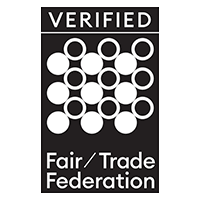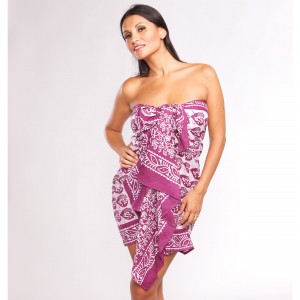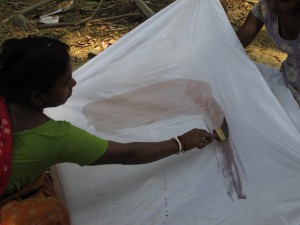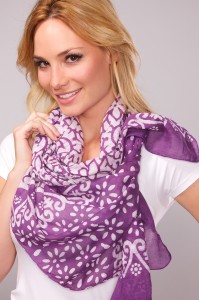Batik Scarves & Sarongs
In our continued quest to create unique fair trade fashion for our customers, Sevya searches for the best artisan groups in India who are creating the finest handcrafted fabrics. On our most recent trip to India, we had the opportunity to spend time watching how these artisans create beautiful batik designs on cotton and silk fabric and we developed a new collection of batik scarves and sarongs.
Batik translates to 'wax writing', 'to dot’, or 'drawing with a broken line'. It is a way of decorating cloth by covering a part of it with a coat of wax and then dyeing the cloth. When the wax is removed, the contrast between the dyed and undyed areas makes the pattern. It is a three-stage process of waxing, dyeing and de-waxing multiple times in order to achieve a desired design. The characteristic effects of batik are the fine cracks that appear in the wax, which allow small amounts of the dye to seep in.
Batik is a method of decorating fabrics practiced for centuries by the artisans of Indonesia and India. It consists of applying a design to the surface of the cloth by using melted wax. The material is then dipped in cool herbal or low-impact dyes; the portions protected by the wax do not receive the dye, and when the wax is removed in hot water the previously covered areas display a light pattern on the colored ground.
Remains of ancient clothing found in Java indicate that the same or similar patterns have been in use for about a thousand years and are handed down along family lines. Certain designs were traditionally reserved for royalty and high officials. Motifs are geometric or are based on conventionalized natural objects. Natural fabrics like cotton and silk are generally used for hand batik.
Batik artisans employ the process of repeated waxing and tub dyeing to achieve the final result. This method involves an understanding of color mixing and over-dyeing, as each layer of dye is applied over the last, producing a new color.
After many different applications, the background tends towards dark brown, black or grey. The waxed areas remain the lighter shades produced by each individual dye application and combinations thereof.
The traditional colors of batik textiles include indigo, dark brown, and white, which represent the three major Hindu Gods (Brahmā, Vishnu, and Śiva). This is also related to the fact that natural dyes are most commonly available in shades of indigo and brown. Only certain patterns can only be worn by nobility, so wider stripes or wavy lines were used traditionally to signify a person of higher social rank. During Javanese ceremonies one could determine the royal lineage of a person by the cloth he or she was wearing.
As an art form, batik faded from use but has seen a revival in India beginning in the 20th century when it was re-introduced as a subject of study at the famous University of Shantiniketan in Kolkata. In the south, near Chennai, the well-known
artists’ village of Chola-Mandal is also an important center for continued development of batik craft.
The batik process is quite intricate and the resulting design and patterns are stunning and very unique. You will find many gorgeous examples of our Fair trade batik scarves and sarongs in our wholesale fair trade collection.




